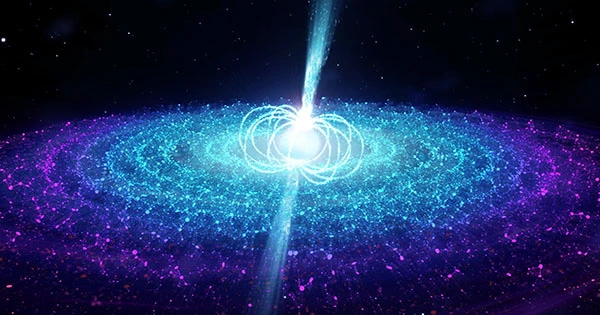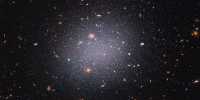A pulsar with peculiar behavior has been discovered, and it is expected to be the first of a new type of neutron stars. Because of its 76-second period and unusual position, scientists believe it may be the first example of ultra-long period magnetars, a form of neutron star that has long been postulated but never seen. Supernova explosions of stars with masses between 10 and 25 times that of the Sun leave behind neutron stars. They are extremely hot at first, but they do not create new energy until matter is accreted onto them, thus they eventually cool down.
As a result, despite the fact that the galaxy is supposed to be filled with neutron stars, we can only observe those that are young enough to retain most of their heat. Pulsars are a type of neutron star that spins and emits radio waves that sweep over the sky. The discovery of PSR J0901-4046, a pulsar with various unexpected properties that make it unlike anything observed previously, is reported in Nature Astronomy, although the specifics are still being worked out.
Pulsars begin spinning at thousands of times per second and gradually slow down until their spin durations are in the tens of seconds. Aside from an aberrant white dwarf pulsar and a mystery case, PSR J0901-period 4046’s is more than three times the previous record at 75.9 seconds. But that’s just the beginning of its peculiar characteristics. Instead of emitting identical pulses every time its radio beam passed Earth, it flashed seven distinct sorts of pulses dependent on form and strength. The most prevalent are those classified as “split-peak,” followed by “quasi-periodic” and “partially nulling” by the authors.
PSR J0901-4046 also has the distinction of being located in the Vela-X1 region of the Milky Way, which is renowned as a neutron star “graveyard.” Since major star creation ceased there a long time ago, any such stars are considered to be old enough to have stopped emitting. The report concludes that PSR J0901-4046 is 5.3 million years old, which is ancient by pulsar standards but not unusually so. Many other features of what has been observed, on the other hand, are more difficult to describe.
The article concludes, “Ultimately, it is unknown what generates the quasi-periodicity in PSR J0901-4046.” “Global magneto-elastic axial (torsional) oscillations offer a tempting explanation, but the persistence of our periodicities would need repeated triggers and/or extremely lengthy damping durations,” says the author. One possibility is that PSR J0901-4046 is a magnetar, an uncommon kind of pulsar distinguished by extremely strong magnetic fields. Many of its measurable properties, on the other hand, are even less similar to other magnetars than they are to certain non-magnetar pulsars.
It hasn’t been discovered to emit X-Rays, for example, unlike other known magnetars. It has been suggested that a class of ancient, ultra-long period magnetars exists, and PSR J0901-4046 may be the first example we have discovered. It would have been quite simple to overlook PSR J0901-4046. According to Dr. Manisha Caleb of the University of Sydney, “the majority of pulsar surveys do not search for periods this long, so we have no idea how many of these stars might exist.”
As a result, it’s likely there are many pulsars similar to PSR J0901-4046 in the galaxy that we’ve been overlooking. If that’s the case, either there are a lot more neutron stars in the galaxy than we thought, or we’ve underestimated the life cycles of pulsars, or the link between magnetars and other neutron stars has been misconstrued.















